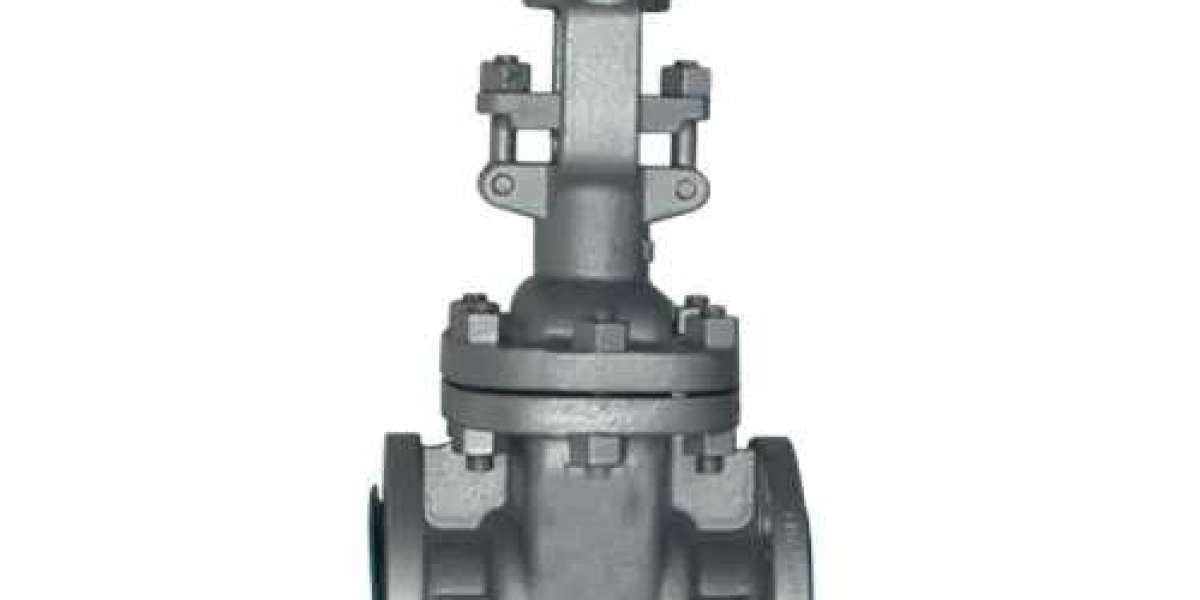Gate valves are crucial components in fluid control systems, providing a reliable and effective means of regulating flow in pipes. As one of the most commonly used types of valves in various industries, gate valves play an essential role in controlling the passage of liquids, gases, and other materials. Understanding how gate valves work and their key features is vital for engineers and technicians involved in the design, maintenance, and operation of fluid systems. In this comprehensive guide, we will explore everything you need to know about gate valves, from their basic operation to troubleshooting and maintenance practices. Whether you're working in the oil and gas industry, water treatment plants, or any other sector where gate valves are used, this guide will provide valuable insights to help you work with gate valves more efficiently.
Table of Contents:
What Are Gate Valves?
How Do Gate Valves Work?
Types of Gate Valves
Applications of Gate Valves
Key Components of Gate Valves
Advantages of Using Gate Valves
Gate Valve Sizing and Selection
Common Issues and Troubleshooting
Maintenance Best Practices
Conclusion
1. What Are Gate Valves?
Gate valves are a type of valve designed to control the flow of liquids and gases by either fully opening or fully closing the valve. Unlike other types of valves such as ball or globe valves, gate valves operate by raising or lowering a gate (also known as a wedge) to block or allow flow. These valves are known for providing minimal pressure drop and smooth operation, making them ideal for applications where full flow is required when the valve is open.
The primary purpose of gate valves is to either start or stop the flow of a substance. Gate valves are typically used in systems where a straight-line flow of fluid is needed and where minimal interference with the flow is desired. The ability to shut off flow completely makes gate valves suitable for applications that involve high-pressure fluids or gases.
Key Characteristics of Gate Valves:
Linear Motion: The gate moves up and down, allowing full opening or closing.
No Flow Restriction: When fully open, gate valves provide a clear passage for fluid with no significant resistance.
Two Positions: Gate valves are designed to be fully open or fully closed, making them ideal for on/off control.
2. How Do Gate Valves Work?
The operation of gate valves is relatively straightforward. The core mechanism involves a gate or wedge that moves vertically inside the valve body. When the valve handle or actuator is turned, it causes the stem to move, which in turn raises or lowers the gate.
When the valve is in the open position:
The gate is lifted completely out of the flow path, allowing for unrestricted fluid passage. This ensures minimal pressure loss and no disruption to the flow.
When the valve is in the closed position:
The gate is lowered into the seat, effectively blocking the flow of fluid through the valve. This results in a tight seal that prevents any leakage.
Gate valves are typically operated by either a handwheel, electric actuator, or pneumatic actuator, depending on the specific application. The stem and gate are often made of materials such as stainless steel, bronze, or cast iron, depending on the fluid being controlled and the valve's application.
Gate Valve Actuators:
Manual Actuators: Often used in smaller, less critical systems. Manual actuation involves turning a handwheel to operate the valve.
Electric Actuators: These provide automated control for large, complex systems and are often used in industrial applications.
Pneumatic Actuators: Pneumatic actuators are commonly used in systems requiring fast and reliable valve control.
3. Types of Gate Valves
Gate valves come in various types, each designed to meet specific operational needs and environmental conditions. The following are the most common types:
3.1 Wedge Gate Valve
The wedge gate valve is the most commonly used type of gate valve. It consists of a single gate that is typically tapered to form a wedge shape. When the valve is closed, the wedge is pressed against a seat to create a tight seal. This design makes wedge gate valves ideal for high-pressure applications.
3.2 Parallel Gate Valve
Unlike the wedge gate valve, the parallel gate valve has a gate that is parallel to the valve body. This design allows for a smoother operation, making it ideal for applications with lower pressures and where less resistance to flow is required.
3.3 Rising Stem Gate Valve
A rising stem gate valve is designed so that the stem of the valve rises as the valve is opened. This allows operators to visually verify whether the valve is in the open or closed position.
3.4 Non-Rising Stem Gate Valve
In contrast, a non-rising stem gate valve does not have a rising stem. This type of valve is commonly used in applications with limited space, where a rising stem would be impractical.
3.5 Knife Gate Valve
Knife gate valves are designed for use in systems that transport slurries, solids, or thick fluids. The knife-like gate is sharp and can cut through thick materials, making it ideal for waste and mining industries.
4. Applications of Gate Valves
Gate valves are versatile and can be used in a variety of applications, including but not limited to the following:
4.1 Water Treatment Plants
In water treatment plants, gate valves are used to control the flow of water in pipelines. These valves can quickly and effectively shut off or allow the flow of water during various stages of the treatment process.
4.2 Oil and Gas Industry
Gate valves are used extensively in the oil and gas industry for controlling the flow of crude oil, natural gas, and other substances in pipelines. These valves must be able to withstand high pressures and harsh environmental conditions.
4.3 Power Plants
Gate valves are critical components in power plants, particularly in steam and water lines. These valves help regulate the flow of steam and water, ensuring the proper functioning of turbines and other power plant systems.
4.4 Chemical Processing
In chemical processing plants, gate valves are used to control the flow of chemicals and other substances in pipelines. The ability to handle high-pressure fluids makes gate valves essential in these applications.
5. Key Components of Gate Valves
Gate valves are made up of several essential components that work together to ensure efficient operation:
Valve Body: The main structure that houses the internal components of the valve.
Gate (Wedge): The primary element that blocks or allows fluid flow.
Stem: A shaft that connects the actuator to the gate and transmits motion.
Bonnet: The top part of the valve that covers and protects the stem.
Seat: A surface that provides a sealing point for the gate when the valve is closed.
Actuator: The mechanism used to operate the valve, either manually, electrically, or pneumatically.
6. Advantages of Using Gate Valves
Gate valves offer several advantages that make them the preferred choice for many fluid control applications:
6.1 Minimal Flow Resistance
When fully open, gate valves provide a clear, unobstructed flow path, resulting in minimal pressure drop. This is especially important in applications where high flow rates are required.
6.2 Reliable Shut-Off
Gate valves are designed to provide a tight seal when closed, preventing any leakage of fluid or gas. This makes them ideal for systems that require a reliable shut-off mechanism.
6.3 Durability
Gate valves are generally durable and can withstand harsh conditions, including high pressures, extreme temperatures, and corrosive environments.
6.4 Versatility
Gate valves can be used in a wide range of applications, from simple water systems to complex industrial processes. Their flexibility makes them suitable for many industries.
7. Gate Valve Sizing and Selection
Selecting the right gate valve for a specific application is crucial for ensuring efficient and safe operation. The following factors should be considered when choosing a gate valve:
Flow Requirements: Consider the required flow rate and pressure for the system.
Material Compatibility: Choose materials that are compatible with the fluid being controlled to prevent corrosion and wear.
Temperature and Pressure Ratings: Ensure that the valve is rated for the temperature and pressure conditions of the application.
Valve Type: Select the appropriate gate valve type based on the application, such as wedge or parallel.
8. Common Issues and Troubleshooting
Despite their durability, gate valves can encounter issues over time. Some common problems include:
Leakage: This can occur due to worn seals or damaged seats. Regular inspection and maintenance are essential to prevent leaks.
Sticking Gate: If the gate becomes stuck, it may need to be lubricated or cleaned to restore smooth operation.
Corrosion: Gate valves exposed to corrosive fluids may degrade over time. Choosing the right materials and protective coatings can help prevent this.
9. Maintenance Best Practices
Regular maintenance is key to ensuring the longevity and reliable performance of gate valves. Here are some best practices:
Lubricate the Stem and Gate: Periodically lubricating the stem and gate can prevent sticking and reduce wear.
Inspect the Seats and Seals: Regularly check the seats and seals for signs of wear or damage, as these are critical for preventing leakage.
Clean the Valve: Remove debris and contaminants that may affect the valve's performance.
10. Conclusion
Gate valves are vital components in fluid control systems, offering reliable and efficient performance across a variety of applications. By understanding how gate valves work, their different types, and their key components, engineers and technicians can ensure the proper selection, installation, and maintenance of these valves for optimal system performance. Whether you're working in the oil and gas industry, water treatment plants, or any other field, this guide provides the essential knowledge needed to work with gate valves effectively and troubleshoot potential issues.
By following best practices for valve maintenance and understanding the critical factors in selecting the right gate valve, professionals can keep their systems running smoothly and efficiently for years to come.



